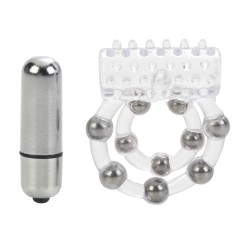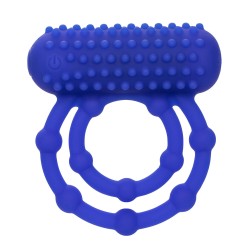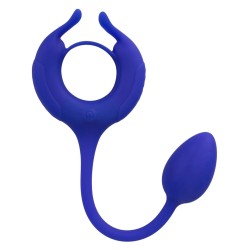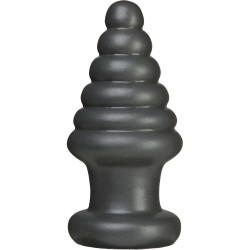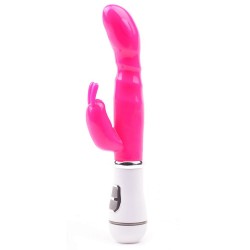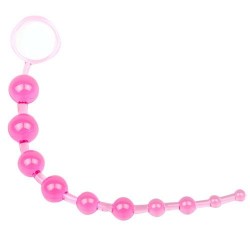
Orgasms are often described as the pinnacle of sexual pleasure, but beyond the thrill and intense sensations, there's a fascinating interplay of biology, psychology, and chemistry at work. Understanding the science behind orgasms not only deepens your appreciation of your body's capabilities but can also enhance your sexual experiences. In this guide, we'll explore what happens in your body during an orgasm, debunk common myths, and provide actionable tips to intensify your pleasure—including the intriguing phenomenon of female ejaculation or squirting.
The Biological Mechanics of an Orgasm
An orgasm involves a series of rhythmic contractions in the pelvic region, driven by coordinated signals between your brain and body. These contractions typically occur at intervals of about 0.8 seconds and can range in number depending on factors like stimulation intensity, emotional state, and overall health. The entire process begins with sexual stimulation, causing nerve endings in your genital area to send signals to your spinal cord and brain, initiating arousal. Your brain, interpreting these signals, intensifies sexual sensations and ultimately triggers orgasmic release.
Neurotransmitters: The Pleasure Chemicals
During sexual arousal and orgasm, your brain releases a powerful cocktail of neurotransmitters and hormones, including:
- Dopamine: Often called the 'pleasure chemical,' dopamine is responsible for feelings of reward and euphoria, reinforcing sexual behaviors. Increased dopamine levels during sexual activity heighten sensations of pleasure, encouraging repeated behavior.
- Oxytocin: Dubbed the 'love hormone,' oxytocin fosters feelings of intimacy, connection, and trust, particularly important in partner sex. Released in substantial quantities during orgasm, oxytocin also facilitates bonding and emotional closeness.
- Endorphins: These natural painkillers create a sensation of pleasure and relief, sometimes described as a blissful high. Endorphins contribute to a sense of wellbeing, often reducing stress and elevating mood significantly.
- Serotonin: Helps regulate mood and contributes to feelings of happiness post-orgasm. A healthy serotonin level post-orgasm helps maintain emotional balance and overall mental wellness.
This neurochemical mix explains why orgasms feel intensely pleasurable and emotionally bonding.
The Anatomy of Pleasure: How Your Body Responds
Every person experiences pleasure differently, and no two orgasmic journeys are the same. What works beautifully for one body may not resonate with another—and that’s perfectly natural. The key is exploration, patience, and an openness to understanding your unique rhythm and responses.
Orgasm Types and Techniques for Women
Women's orgasms can vary significantly. Here are some distinct types and how you might achieve them:
- Clitoral Orgasms: Usually achieved through direct clitoral stimulation with fingers, vibrators, or oral sex. The clitoris, densely packed with nerve endings, is uniquely designed for pleasure.
- Vaginal Orgasms: Often triggered by penetration or specific G-spot stimulation, enhancing sensations deeper inside. G-spot-focused toys or deeper penetration positions enhance this type of orgasm.
- Cervical Orgasms: Deep penetration or specific angles that stimulate the cervix can induce powerful, full-bodied orgasms. Experimenting with positions such as doggy style or missionary with elevated hips may facilitate this sensation.
- Blended Orgasms: Combining multiple stimulation points, typically clitoral and vaginal, leading to intense pleasure. Dual-action vibrators or simultaneous manual and penetrative stimulation are excellent ways to explore blended orgasms.
Take your time—building anticipation and prolonging stimulation can profoundly amplify orgasmic intensity.
Female Ejaculation: The Science of Squirting
Female ejaculation, commonly known as squirting, involves fluid expulsion from the urethra during intense sexual arousal or orgasm. Despite increased awareness, numerous misconceptions persist about this phenomenon. One common myth is that squirting is purely urine; while the fluid expelled does contain diluted urine, it also includes substances from the Skene’s glands, akin to the male prostate, reinforcing that squirting is distinct from simple urination.
Practically, squirting is most often achieved through intense stimulation of the G-spot area, located roughly 2–3 inches along the front wall of the vagina. The combination of rhythmic, firm pressure and consistent stimulation can create a buildup of sensation often described as a feeling of fullness or pressure. To enhance your chances of experiencing squirting:
- Hydrate: Staying hydrated ensures your body has sufficient fluid to release.
- Relax and Set the Mood: Anxiety can inhibit your body's response. Create a comfortable, stress-free environment.
- Use Proper Techniques: Using two fingers in a "come-hither" motion, gently but firmly massage the G-spot area. Consider employing toys specifically designed for G-spot stimulation, such as curved vibrators.
- Focus on Breathing: Deep, rhythmic breaths aid relaxation and increase body awareness, enhancing the buildup of sensations.
- Listen to Your Body: Pay attention to your body's signals and adjust pressure, rhythm, and pace as sensations intensify.
- Don’t Rush the Experience: Allow arousal to build gradually and resist the urge to speed things up. Taking your time creates more intense sensations and can significantly increase your chances of achieving squirting. Let it unfold naturally without pressure.
The expelled fluid during squirting is typically clear, odorless, and can vary in volume. It may contain traces of diluted urine, but research shows it also includes fluids from the Skene’s glands, which is responsible for producing a component of female ejaculate. This helps distinguish squirting from normal urination and contributes to the unique sensation experienced during ejaculation.
Many find squirting extremely pleasurable, with sensations often described as cathartic or emotionally releasing. However, it's not experienced by everyone—and that's perfectly normal. Explore without expectation, allowing yourself to enjoy the journey as much as the outcome.
Overcoming Common Orgasmic Challenges
Difficulties achieving orgasm are common but manageable. Solutions include:- Difficulty Reaching Orgasm (Anorgasmia): Mindfulness practices, stress reduction techniques, prolonged foreplay, and experimentation with different types of stimulation and toys can significantly improve experiences.
- Premature Ejaculation (Men): Edging techniques, pelvic floor exercises, and using desensitizing products consistently can increase control and prolong pleasure.
- Delayed Ejaculation: Often psychological; open communication, stress reduction, and experimenting with varied stimulation techniques help address this challenge effectively.
Common Orgasm Myths—Debunked
Sex and orgasms are often surrounded by outdated ideas and misinformation. Let's clear up a few of the most common myths that can hinder confidence and pleasure:
- Myth: Vaginal orgasms are superior to clitoral orgasms.
Truth: All orgasms are valid. The clitoris has over 8,000 nerve endings—more than any other part of the human body—and most people with vulvas orgasm through clitoral stimulation, not penetration alone. No type is better; it's about what feels good to you. - Myth: Men can’t have multiple orgasms.
Truth: While less common, some men can experience multiple orgasms by learning to separate ejaculation from orgasm. Through techniques like edging and pelvic floor training, it's possible to orgasm multiple times before ejaculating. - Myth: Everyone should be able to orgasm easily.
Truth: Orgasm can be affected by physical, emotional, and psychological factors. Struggling to orgasm is more common than people think, and it doesn’t mean anything is wrong. Everyone’s body is different. - Myth: Squirting means you’ve "done it right."
Truth: Squirting is just one type of orgasmic response. It's not a goal or a measure of better sex. If it happens, great. If not, also great. The best measure is how good it feels for you.
Challenging these myths helps create a more inclusive and pressure-free view of sexuality.
Advanced Techniques for Heightened Pleasure
These techniques apply to all genders and bodies. Men, for example, may also benefit from mindful practices and exploration of the prostate—a highly sensitive, orgasmic zone often referred to as the male G-spot. With proper care, communication, and lubrication, prostate stimulation can lead to intense orgasms, even without penile stimulation. Whether using fingers or specially designed toys, go slow, listen to your body, and follow your comfort level.
Consider these advanced practices to enhance orgasmic pleasure and deepen your connection with your own body or a partner. Each method taps into heightened awareness, control, and intimacy to make orgasms more powerful and satisfying:
- Edging: Also known as orgasm control, edging involves deliberately bringing yourself or your partner close to climax and then backing off before reaching it. Repeating this cycle builds sexual tension and leads to an explosive release. You can practice edging solo by watching your arousal levels and pausing stimulation, or in partnered settings through teasing and pausing before orgasm.
- Tantric Sex: Rooted in ancient Eastern traditions, tantric sex is about prolonging intimacy and building slow, intentional connection. It incorporates deep breathing, eye contact, full-body touch, and spiritual awareness. Try spending 30 minutes or more on sensual, non-goal-driven touch before focusing on genitals. This helps reframe sex as a journey, not just a destination.
- Breath Control: Conscious breathing techniques can help build arousal and prevent premature orgasm. Try inhaling deeply through your nose and exhaling slowly through your mouth, syncing breath with movement. Breath work can ground you in the moment, reducing anxiety and amplifying pleasure.
- Sensory Deprivation or Stimulation Play: Using blindfolds, earplugs, or restraints removes one or more senses, allowing others to heighten. This intensifies physical sensations and deepens trust in partnered play.
- Mutual Masturbation: Watching each other touch yourselves not only builds anticipation but also teaches what feels best. It’s an excellent way to boost confidence, explore desires, and sync rhythms without pressure.
- Mindful Masturbation or Sex: Slowing everything down and focusing entirely on sensations—how your skin feels, the texture of touch, the sounds of breathing—helps build a stronger mind-body connection. Turn off distractions and dedicate time to pleasure as a form of self-care.
These techniques aren’t just about climax—they’re about building intimacy, understanding your desires, and enhancing your overall relationship with pleasure.
Products That Enhance Orgasmic Pleasure
Lovedo recommends these proven products:
- LELO Sona 2 Cruise: This sonic clitoral stimulator uses SenSonic™ technology to deliver deep, resonant pleasure without direct contact. Its Cruise Control feature ensures consistent intensity, even when pressed firmly against the body.
- LELO Hugo: A remote-controlled prostate massager designed for hands-free use. With two powerful motors in the base and tip, it offers intense stimulation to both the prostate and perineum, enhancing the male climax experience.
- Satisfyer Pro 2: Utilizing innovative Airpulse technology, this device stimulates the clitoris with gentle or intense waves of pressure. It’s waterproof and offers 11 intensity settings, making it a versatile choice for many.
- Bodywand 5 Function Mini Wand Massager: Compact yet powerful, this mini wand features five vibration functions and a flexible head for multi-directional use. It’s engineered for strong and continuous stimulation, making it a great travel companion.
- Personal Lubricants: Enhance comfort and pleasure with high-quality lubricants. Options like water-based lubricants are compatible with most toys and condoms, ensuring a smooth experience.
These products are designed to cater to diverse preferences and can significantly enhance solo or partnered experiences. Remember, exploring different types of stimulation and taking the time to understand your body's responses can lead to more fulfilling and pleasurable experiences.
Conclusion: Embracing Your Orgasmic Journey
Understanding orgasm science enriches appreciation and capability for pleasure. Exploring orgasmic types, overcoming common barriers, and leveraging psychological insights and advanced techniques will significantly enhance your sexual experiences.
Above all, remember that pleasure isn’t a race. Taking your time—whether you’re on your own or with a partner—can dramatically enhance arousal, deepen emotional connection, and heighten the quality of your orgasms. Every body responds differently, and learning to listen to what yours is telling you is one of the most empowering things you can do. There's no "right" way to experience pleasure, only the way that feels best for you.
Whether solo or partnered, embracing curiosity, slowing things down, and prioritizing sexual wellness paves the way to a deeply fulfilling, joyful sexual journey.





















